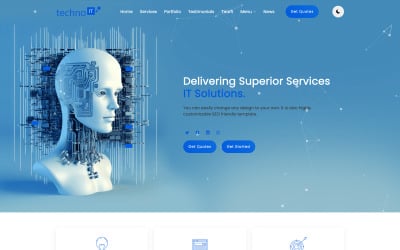Top Tips for Creating an Impactful Web Site Design That Converts
In today's electronic landscape, the significance of an impactful internet site design can not be overemphasized, particularly when it pertains to transforming site visitors right into clients. To attain this, one must think about a variety of factors, including recognizing the target audience, focusing on individual experience, and optimizing for mobile systems. Furthermore, the calculated use engaging call-to-actions and a distinct aesthetic hierarchy plays a critical function in directing customers through their trip. As we explore these essential aspects, it comes to be obvious that the success of your internet site rests on greater than simply aesthetic appeal; it calls for a thoughtful method to style and capability.

Understand Your Target Audience
Recognizing your target audience is essential to reliable web site style, as it lays the foundation for producing an interesting user experience. Identifying who your individuals are, including their demographics, preferences, and behaviors, enables designers to tailor the website's content, layout, and performance to meet particular requirements.
Carrying out detailed market research study is crucial in this process. Studies, interviews, and analytics can give beneficial understandings into user expectations and discomfort points. By compiling this data, designers can create customer identities that stand for various sectors of the audience, making sure that style choices are notified and appropriate.
Additionally, comprehending the target market aids in picking proper design aspects such as color pattern, typography, and imagery that reverberate with individuals. A website that talks directly to its target market promotes a sense of connection and count on, encouraging longer gos to and higher conversion rates.
Inevitably, a user-centered strategy to internet site design not just improves user complete satisfaction however also sustains service purposes by driving interaction and loyalty. By focusing on the needs and preferences of the target market, a site can successfully serve its purpose and accomplish desired outcomes.
Prioritize User Experience
To boost the overall effectiveness of a site, focusing on user experience (UX) is important (Website Design). A well-designed UX makes certain that visitors can browse the website easily, find info rapidly, and engage with content meaningfully. This brings about enhanced individual complete satisfaction and greater conversion rates
Begin by executing user-friendly navigating. Menus should be realistically structured, enabling customers to locate crucial areas of the site with very little initiative. Consistency in design aspects, such as color pattern and font styles, fosters experience, which is critical for maintaining customer involvement.
Additionally, consider the packing speed of your site. A delay of just a few seconds can bring about significant drop-offs, as users are less most likely to wait on a slow-loading page. Improving pictures and enhancing code can improve efficiency and keep site visitors.
In addition, clarity in content presentation is important. Use concise, appealing language and damage up text with visuals to boost readability. By prioritizing user experience, you not just create an extra delightful atmosphere for visitors but additionally enhance your brand name's integrity. Inevitably, a focus on UX is an investment in the lasting success of your web site.
Enhance for Mobile Devices
Maximizing for mobile devices is critical in today's digital landscape, where an enhancing variety of users gain access to websites with smart devices and tablets. A more mobile-friendly layout not just boosts user experience however additionally plays a considerable function in improving online search engine positions. To achieve this, it is vital to adopt a receptive layout that automatically adapts to numerous screen sizes and positionings.

Packing speed is one more important element; mobile individuals are generally less patient and expect quick access to details. By focusing on mobile optimization, you ensure that your internet site remains competitive and effectively involves a broader target market.
Usage Engaging Call-to-Actions
An internet site's performance often rests on its capacity to assist site visitors towards preferred activities, making compelling call-to-actions (CTAs) important components of informative post design. CTAs serve as the essential factors that direct individuals to involve with the website, whether that suggests purchasing, authorizing up click here to find out more for an e-newsletter, or downloading a resource.
To develop reliable CTAs, quality is extremely important. Usage concise language that plainly communicates the action you desire the user to take.
Additionally, think about using directional cues, such as arrowheads or images, to direct users towards these buttons. By focusing on these aspects, services can dramatically boost customer interaction, driving conversions and inevitably attaining their website's objectives.
Focus on Visual Hierarchy
Effective web site layout counts heavily on a well-structured visual pecking order that overviews individuals via content seamlessly. By arranging components in a fashion that prioritizes info, developers can boost individual experience and assist in decision-making. This entails making use of size, shade, comparison, and spacing purposefully to accentuate one of the most essential components of a web page.
Making use of larger typefaces for headings and subheadings establishes a clear difference between different sections, allowing users to scan content easily. In addition, employing contrasting colors for buttons and calls-to-action can catch user attention and encourage communication. Whitespace is another crucial part; it avoids mess and makes it possible for individuals to concentrate on key messages without distractions.
Photos and graphics must match the text while additionally adhering to the well-known pecking order, reinforcing the overall message (Website Design). Uniformity in design elements, such as color design and typography, more enhances the aesthetic pecking order, making navigation user-friendly

Conclusion
In verdict, effective web site design necessitates a detailed understanding of the target audience, prioritization of user experience, and mobile optimization. Eventually, a well-executed internet site design serves as an essential component in driving user actions and attaining business purposes.